Artificial intelligence (AI) — specifically with the advent of generative AI and its commercialization — is knocking on the doors of every industry, including performance and growth marketing. Here, we’ll discuss how AI is rapidly becoming the foundation upon which some extremely powerful marketing tools like ChatGPT, JasperAI, Dall-E, MidJourney and more are built and utilized within the programmatic advertising world.
Generative AI leverages machine learning algorithms and other technologies to analyze and make decisions on inputs of various types of data. Some of the tools available now can help organize vast data sets and drive insights and value that help marketers optimize their strategies, improve campaign performance, and generate accurate and consistent results. The value lies in the fact that this can all be done in a fraction of the time that it would typically take a human marketer to carry out these otherwise tedious and time-consuming tasks on her/his own.
Increased efficiency leads to higher quality and quantity outputs, which produces more possible iterations of audience targeting strategies, ad copy, creative design, and even value proposition messaging experimentation frameworks. Freeing up time and resources allows marketers to focus on higher-level strategic initiatives. Equally important, AI can improve quality control efforts by greatly reducing the risk of human error.
For example, it’s possible to have ChatGPT analyze a brand’s prior top-performing ad creatives, and then spit out new variations of the same ad for experimentation and learning purposes. Alternatively, it’s possible to prompt the platform to create totally new ad concepts based on audience interests or historical customer data. With Generative AI, digital marketers can launch paid media campaigns with creative variations at scale, thus improving campaign performance and optimizing ROAS.
What is prompt engineering?
The art of leveraging AI in paid media marketing starts with mastering prompt engineering. Prompt engineering involves constructing detailed and thoughtful text-based prompts as the input for a generative AI platform to understand how to generate the user’s desired output(s). Prompt engineering will look different for various types of marketing tasks. It is the process of designing and fine-tuning the input text (prompt) that is used to train or query the AI model, with the goal of achieving better performance or more accurate results.
Sometimes the smallest difference in your prompt can have a large impact on the quality of the output. Adjusting the length or complexity of the input, and providing context to the machine learning platform will always yield more accurate and desirable results than providing vague prompts. Below are some examples of how prompts can be used to improve performance in digital marketing efforts.
In paid advertising, tools like ChatGPT can analyze data and generate ad copy and visuals based on the prompts given to it, allowing marketers to quickly generate a large number of variations for experimentation.
Once you’ve nailed prompt engineering, the world of generative AI really opens up and can assist with various levers of control for marketers, including creative, measurement and feedback loops, audience targeting, CRO, and strategic deployment.
Each lever has specific ways that generative AI can be used to improve performance and efficiency.
Can AI help with audience/persona research?
Adequate audience research and accurate audience targeting are key components of all successful paid advertising efforts. Knowing your audience enables you to tailor your creative, messaging, and targeting to your potential customers’ exact behaviors and interests, increasing engagement and conversion rate. This can be achieved through the analysis of prior campaign data, conducting customer surveys, or other means of gathering audience insights. High-quality audience research can play a role in determining the ROI of your paid performance marketing campaigns by assisting marketers in directing ads to the right people with messaging that resonates with them.
Generative AI can improve the audience research process by performing quick and accurate analyses on large data sets to identify patterns and draw insights that can be used to create detailed buyer personas and value propositions. By analyzing various inputs such as website analytics, search history, social media behavior, and even customer feedback, generative AI can construct predictive models to identify audiences with similar behaviors and characteristics, leading to improved campaign performance.
For example, suppose a brand aims to target an audience likely to be interested in sustainable cosmetics. In that case, generative AI tools could be used to analyze various data points to hone in on the exact audience who will resonate best with certain ad creative and messaging. With proper prompt engineering, generative AI tools can complete all the heavy lifting for you on your desired task. You just need to be specific. Remember, “Garbage in, garbage out!”
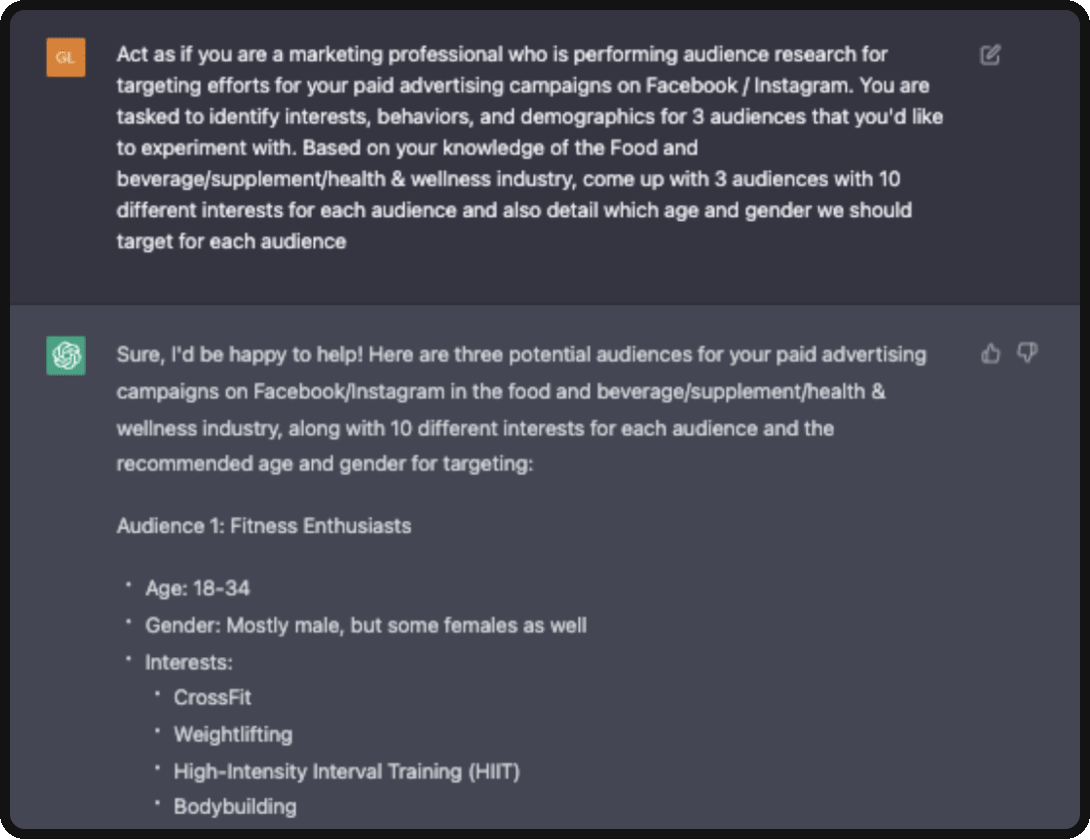
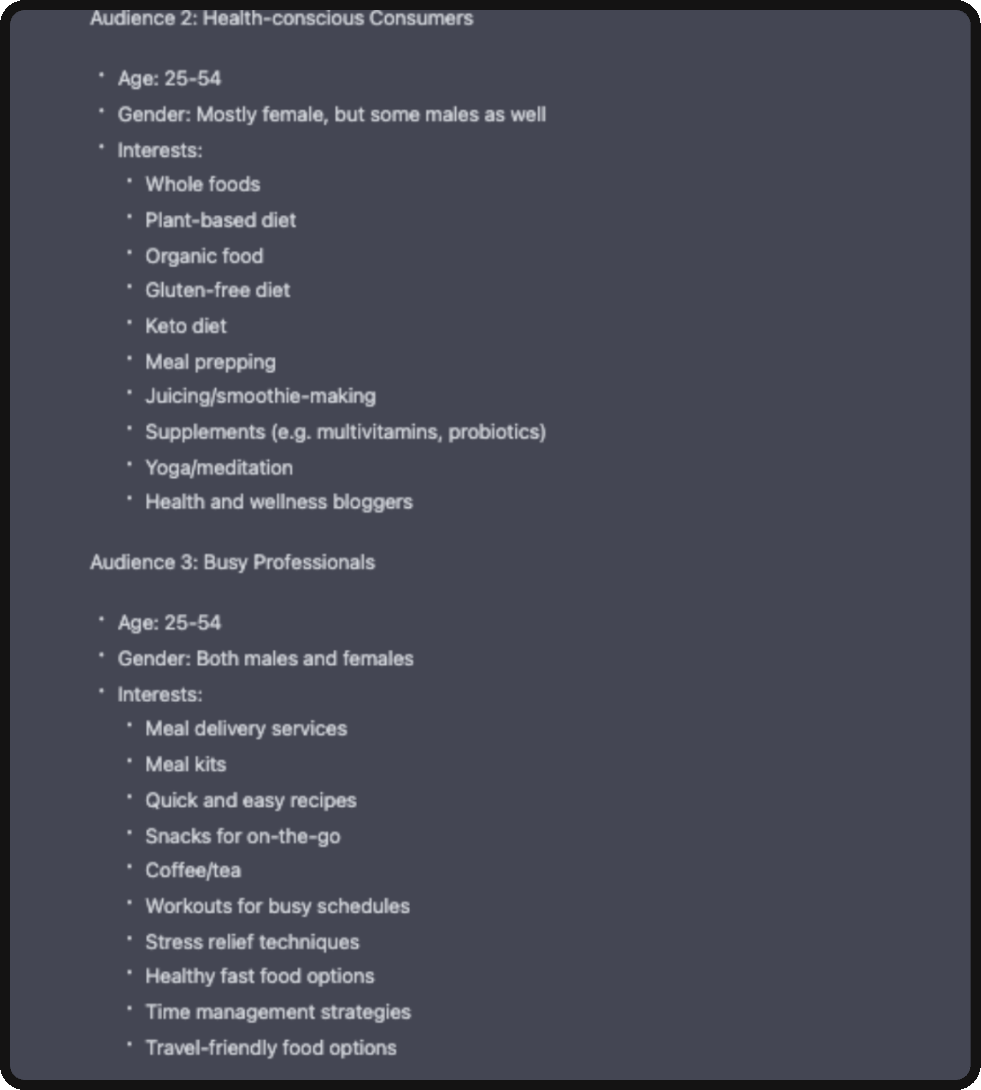
Here, we can see that there is an overlap among the audiences provided by ChatGPT. If you would like to get the most accurate responses, you will have to be extremely clear in your prompt engineering. As we can see below in the edited version, one small detail can make an enormous impact on your results. It is not advised to leave all the decision-making up to the AI platform. There is still a need to train the machine properly so it is able to know what exact parameters to operate within.
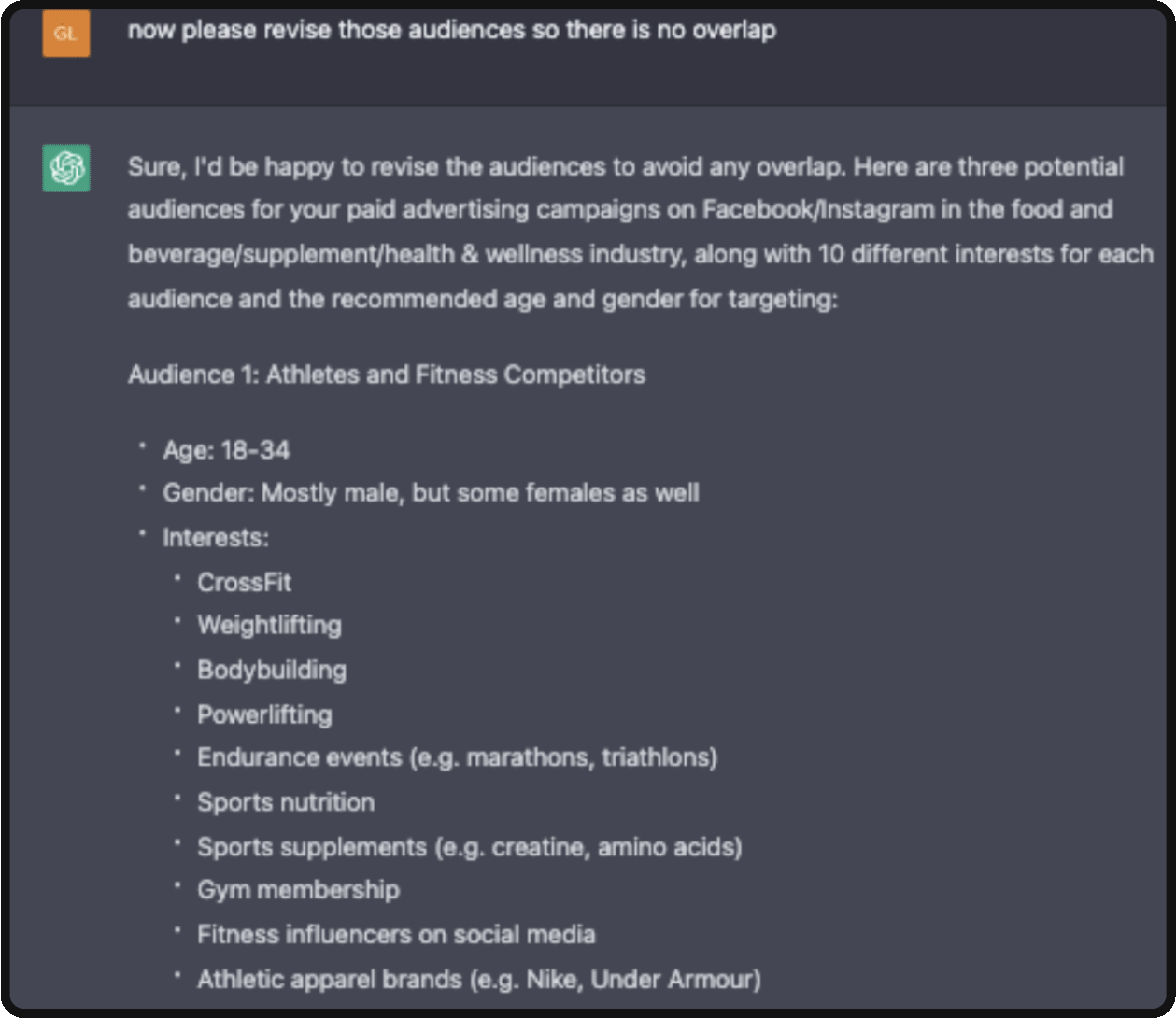

With the revisions made, ChatGPT has recalled what its previous output was, and based on the changes requested in the prompt, it will go back and reiterate the original request with the new parameters considered. Thus, spitting out a better, more relevant answer.
Can AI help generate value propositions?
Another valuable way to save time with generative AI is when identifying value propositions for a brand or company. With clear and detailed prompt engineering, generative AI is capable of recognizing and delivering value propositions for a brand’s product or service offering. This is an extremely important part of building a campaign, where value props are used to hone in on specific ad creative and messaging approaches.
The key to effective use of generative AI for value prop generation is to provide specific guidance to the AI model through prompting. If you ask the right questions and provide relevant information about the brand, its products/services, and its target audience, you’ll set yourself up with a template that can be used repeatedly. Here are some sample questions that can be included in your prompt:
- What are the unique benefits of the product or service being offered?
- Who is the target audience or ideal user for the product/service?
- What problems or pain points does the product/service solve for the target audience?
- What does this brand do that differentiates its offering(s) from competitors?
Once your value props are identified, the next step is to fit them into the larger marketing strategy where they will serve as a messaging framework for the brand. By helping to communicate the unique benefits of a product/service, value propositions inform other essential marketing processes such as helping define the target audience, and even suggesting ad creative/messaging approaches. A strong list of value propositions can help drive sales and build brand loyalty by addressing consumers’ exact needs and desires, thus connecting with them on a deeper level.
Below is a hypothetical example of a brand that needs value props identified for its advertising efforts.
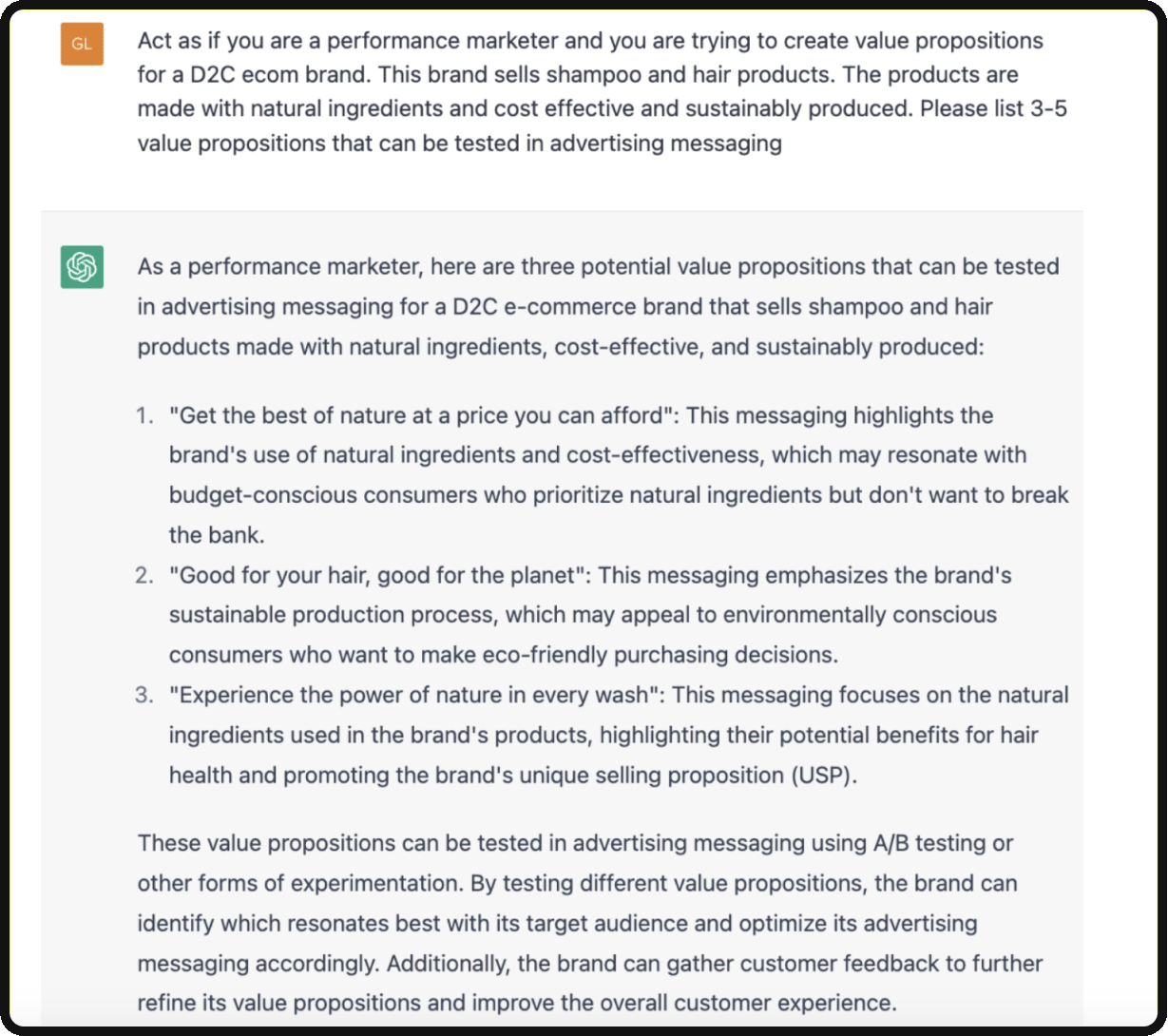
Then, once we are able to engineer the prompt to deliver a satisfactory response, we can utilize the previous learnings that ChatGPT stores and references to take it a step further.
Is AI suitable for ad creative and ad copy?
When it comes to generating ad creative and developing ad copy, AI can save a lot of time and resources. By providing instantaneous customizable results, AI can significantly increase the rate of how quickly marketers are able to create multiple iterations of creative or copy for experimentation purposes.
As with any experimentation, the goal is to increase the effectiveness of marketing campaigns and improve the overall ROI for brands and AI can help generate text or image-based content that is personalized and engaging for individual consumers or personas.
Here, ChatGPT remembers the previous prompt in our “conversation” and will use the value props pulled to then create ideas for ad copy and creative.
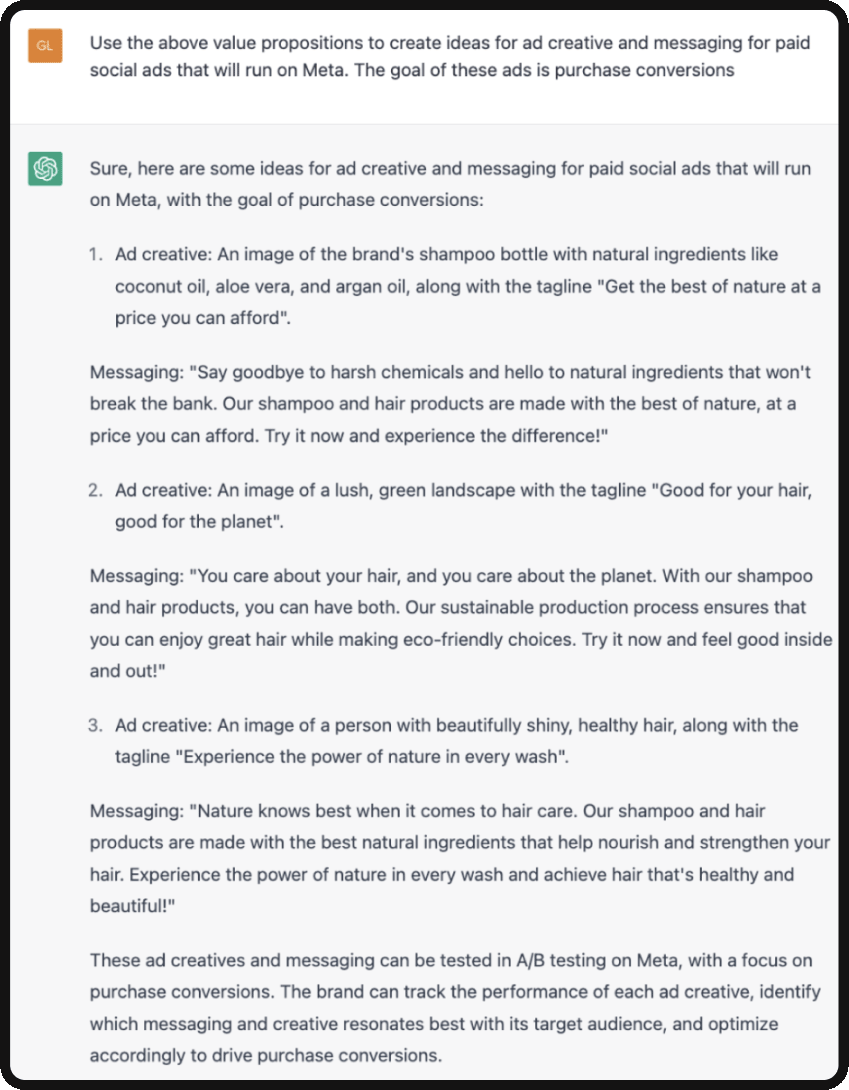
In another example, you can see here that a basic prompt gives a generic answer that might not encapsulate the proper messaging for your brand’s audience. What you need to do is to refine the prompt until you get the desired output that makes sense for your brand or audience.
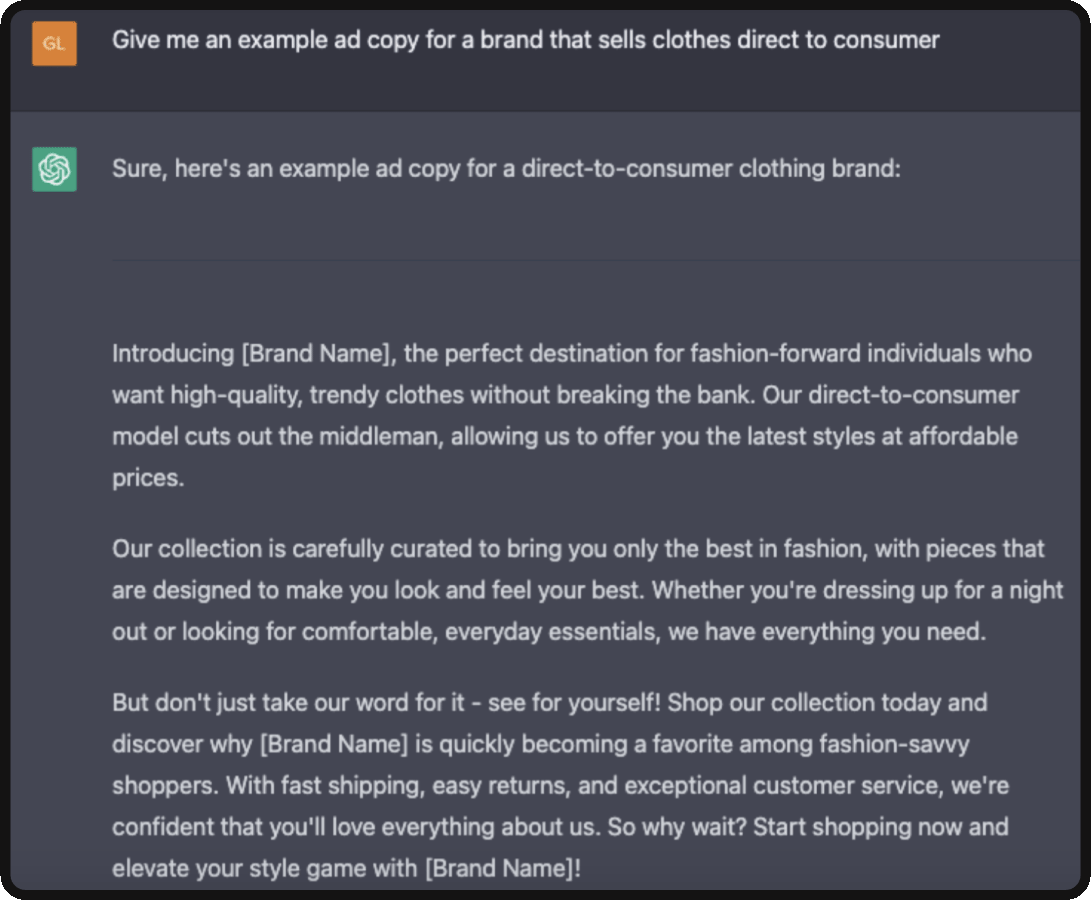
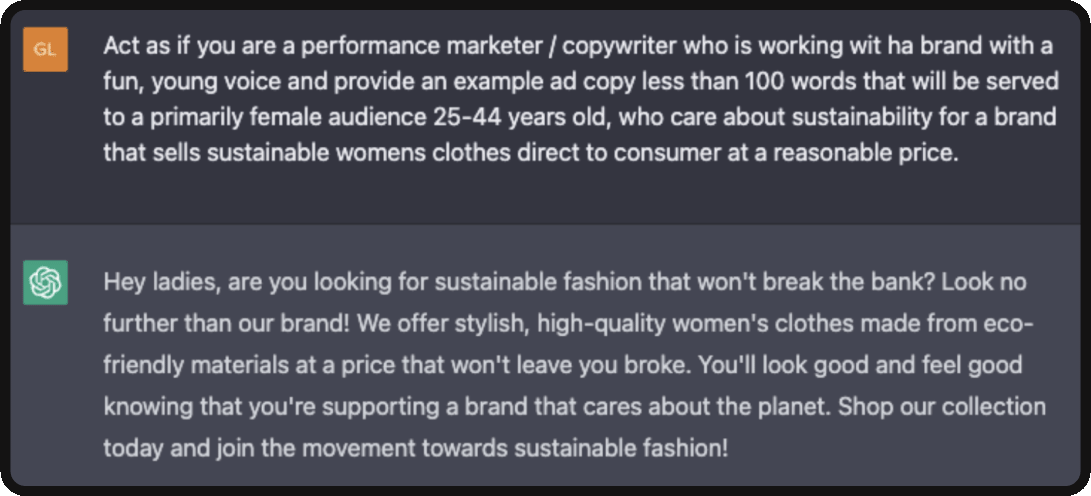
Without identifying the specifics to ChatGPT, the platform will have no way of knowing what you’re looking for. If you keep it in your head, it will stay there! So you have to be extremely clear and concise with your prompt engineering to achieve quality results.
Here, we’re using Dall-E 2 to generate ad creative for a hypothetical hair care brand.
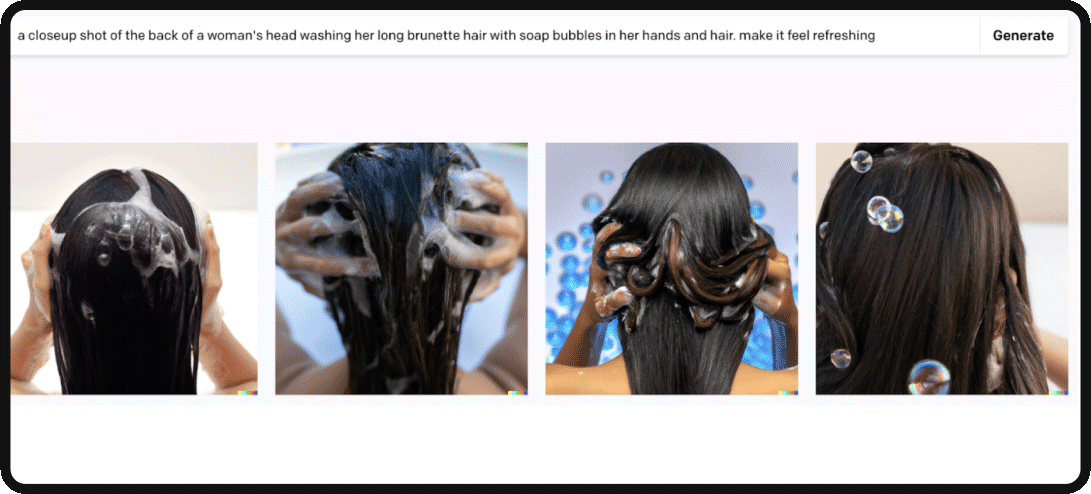
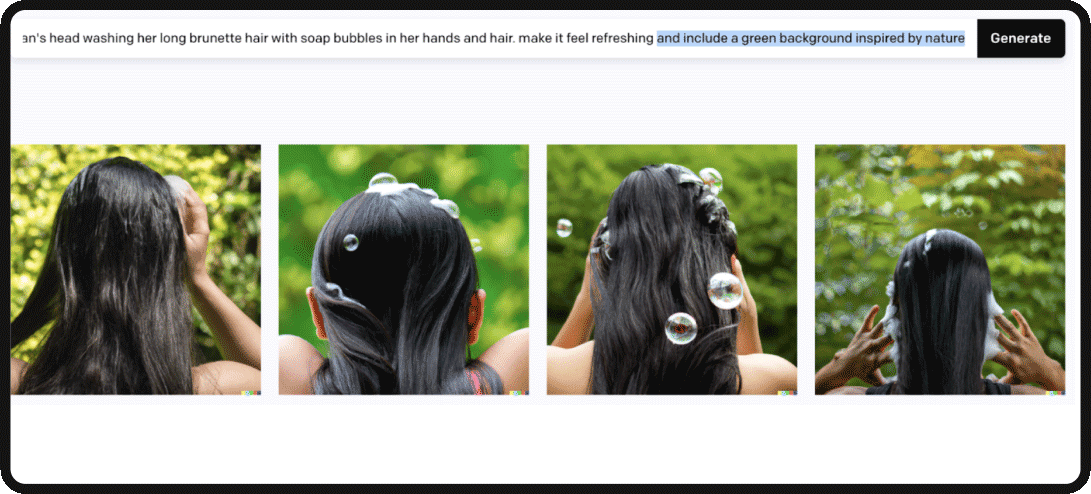
If your original output is not what you were expecting, you can always adjust your prompt as seen above and continue iterating until you’ve got the creative to look like how you imagined it.
Midjourney is another generative AI tool available on the market. With Midjourney, the integration is through Discord, so text prompts are sent directly through Discord and images are generated and sent via message. You’ll get 4 results within 60 seconds of prompting Midjourney, and each result can be split into an additional 4 variations if needed.
Here’s an example from Midjourney, where we are targeting a photorealistic Warehouse Manager, in a cluttered warehouse full of junk, cinematic, dim overhead lighting, stressed, panicking
Midjourney example:


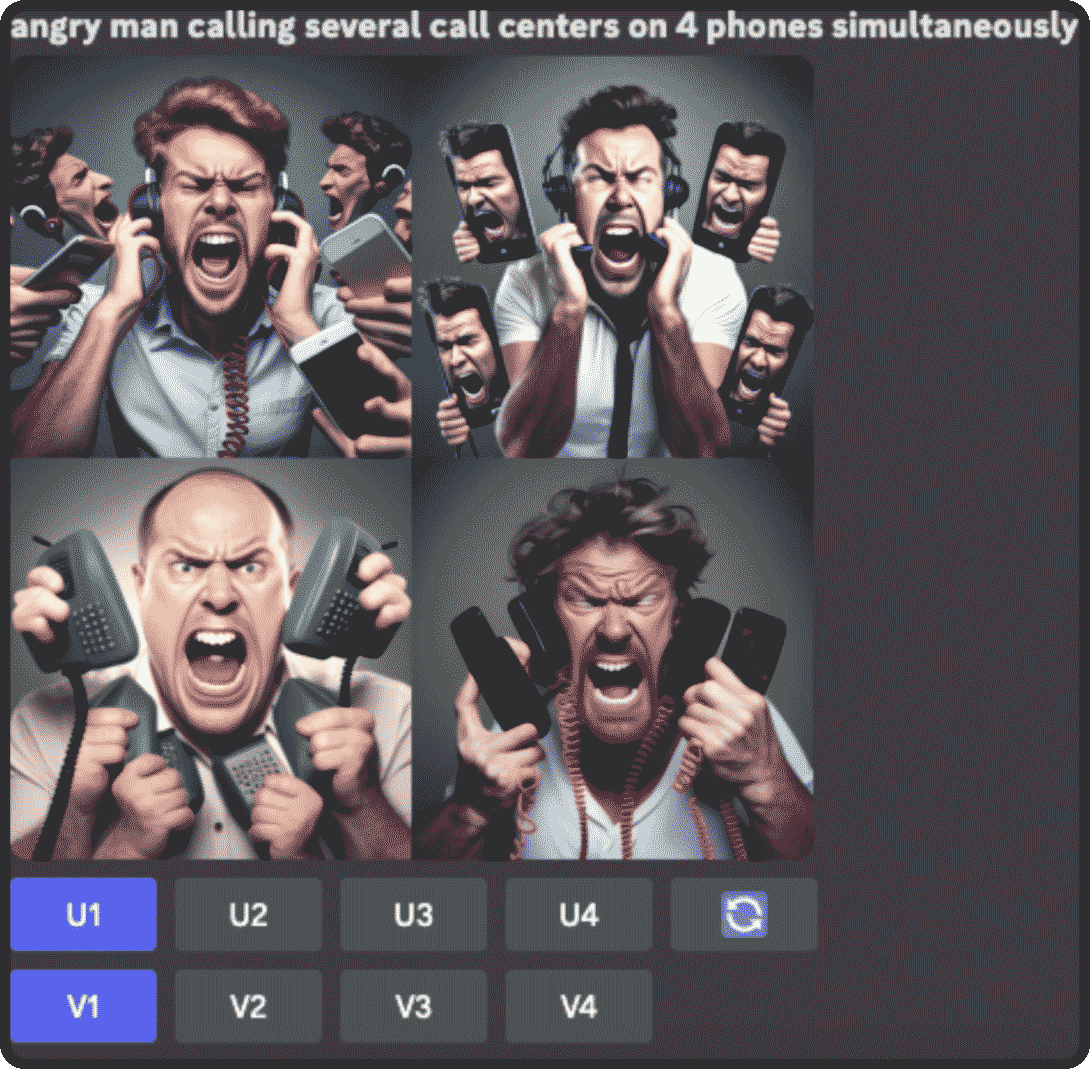
As with any other generative AI task, landing on a final usable ad creative is an iterative process. Here, we can select one or more of the 4 image variations that Midjourney provided. We can select U1-U4, which will use the respective images as the final output, or, we can select V1-V4, which will provide 4 new variations on the respective image if you’re unsatisfied with the original option, but want something similar. See the below example of what happens when you select variations of a single output.
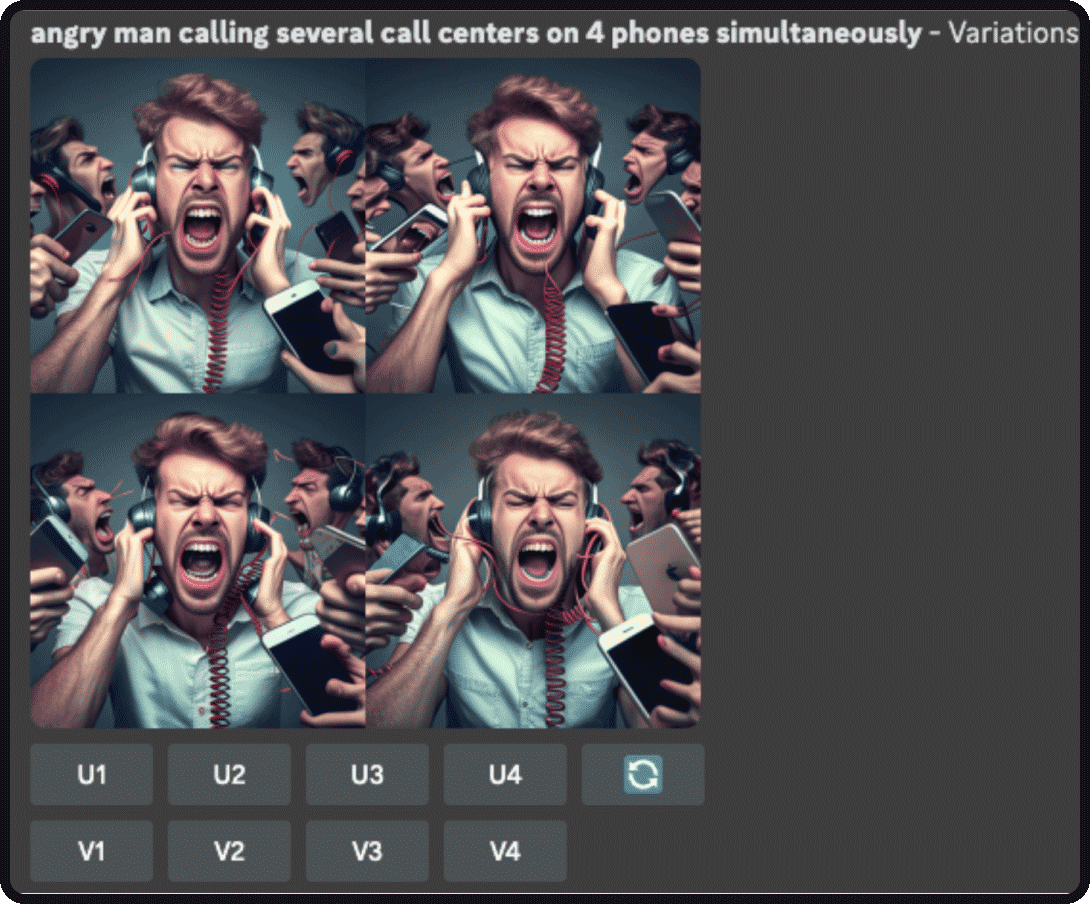
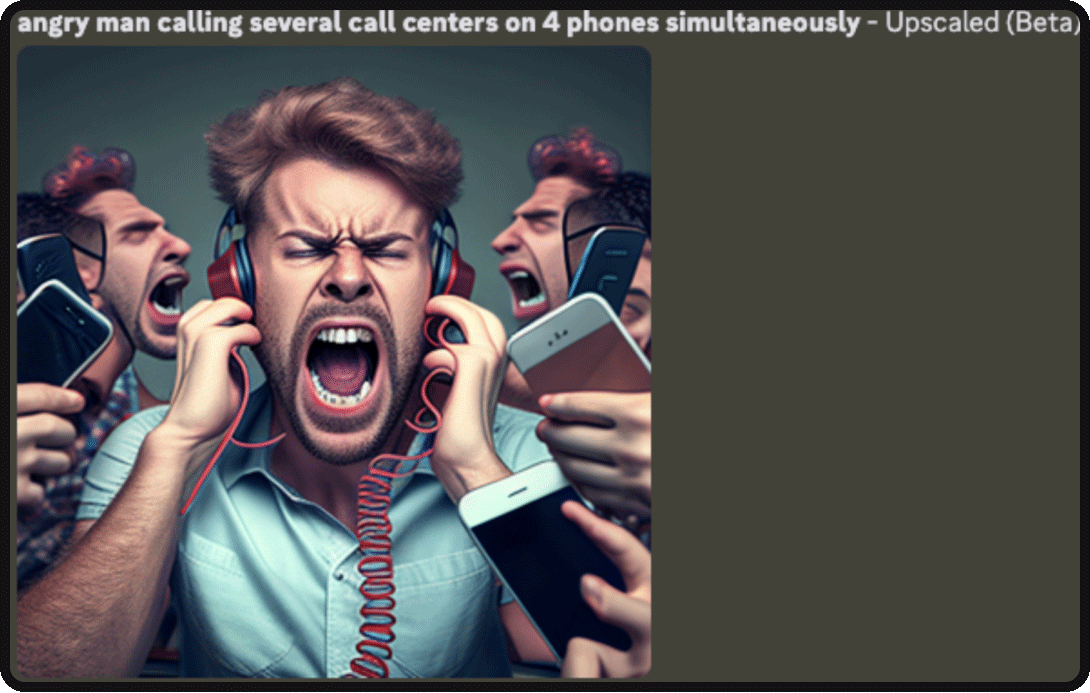
After you have established a target audience, value props and personas, and made ad creative for experimentation, as mentioned earlier, you can use ChatGPT to come up with ad copy for you.
Here, we prompt the AI model with various inputs such as value props that were previously created by the AI model and descriptions of the ad copy that were also generated by AI. By providing as much detail as we can about the audience and messaging and creative, the AI model is able to provide relevant ad copy that will resonate with consumers.
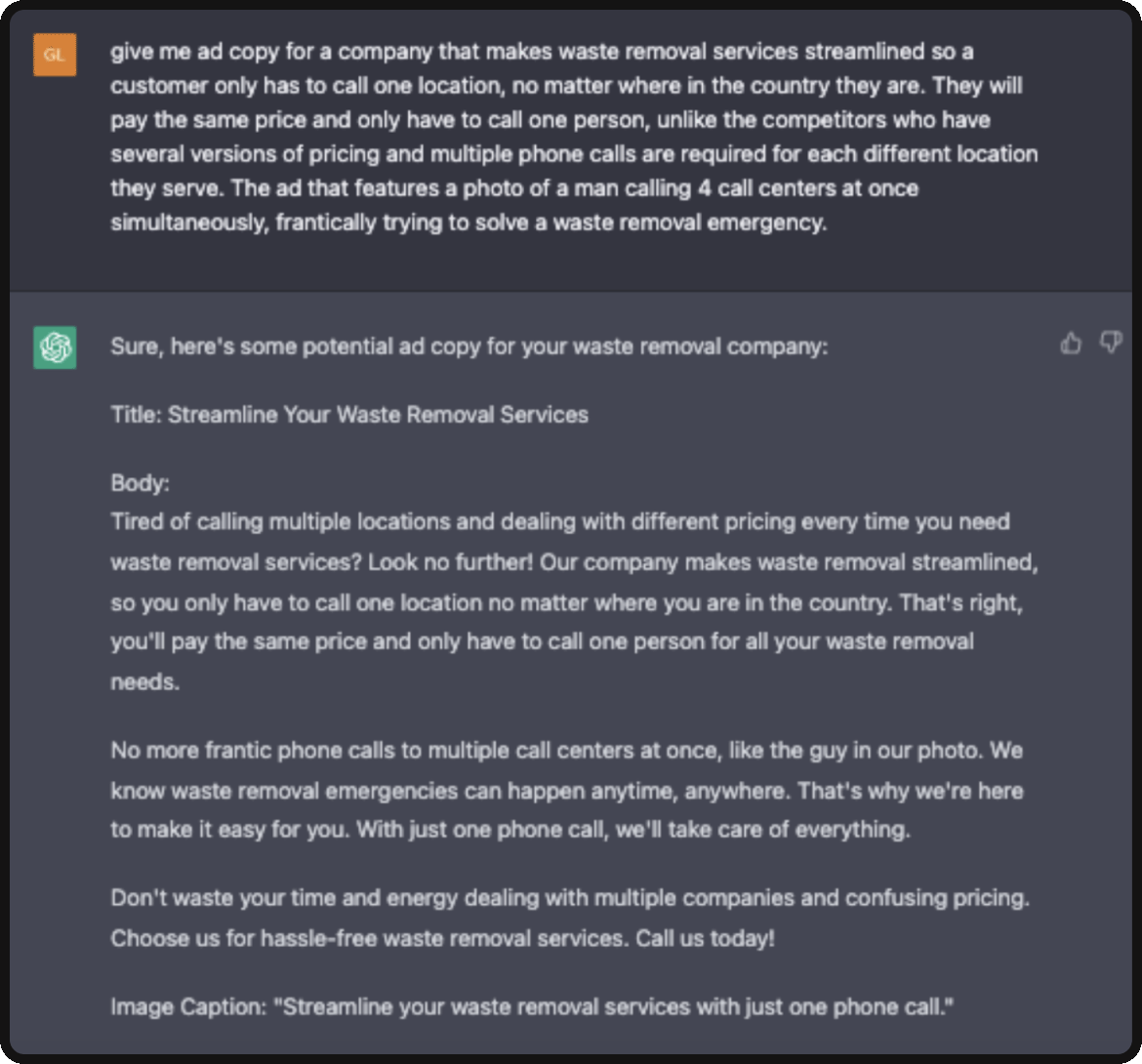
Let’s talk about one particularly useful feature that is guaranteed to save you some time if used properly. Not all advertising platforms have the same character limit; for example, linkedin, twitter, and Facebook/Instagram all have different character limits. Sometimes a caption is ready for Facebook/Instagram but it needs to be shortened for Twitter, or vice versa.
It’s possible to prompt ChatGPT to stay within the character limit for a particular ad platform. Below, ChatGPT was prompted to both contract and expand ad copy based on which ad platform it belongs on. For Twitter, ad copy was shortened and relevant hashtags were added. For LinkedIn, copy was added and the overall tone/voice was more suitable for LinkedIn. It will take some refining to get the exact results that can be used in a paid advertising campaign, but that is up to the user.
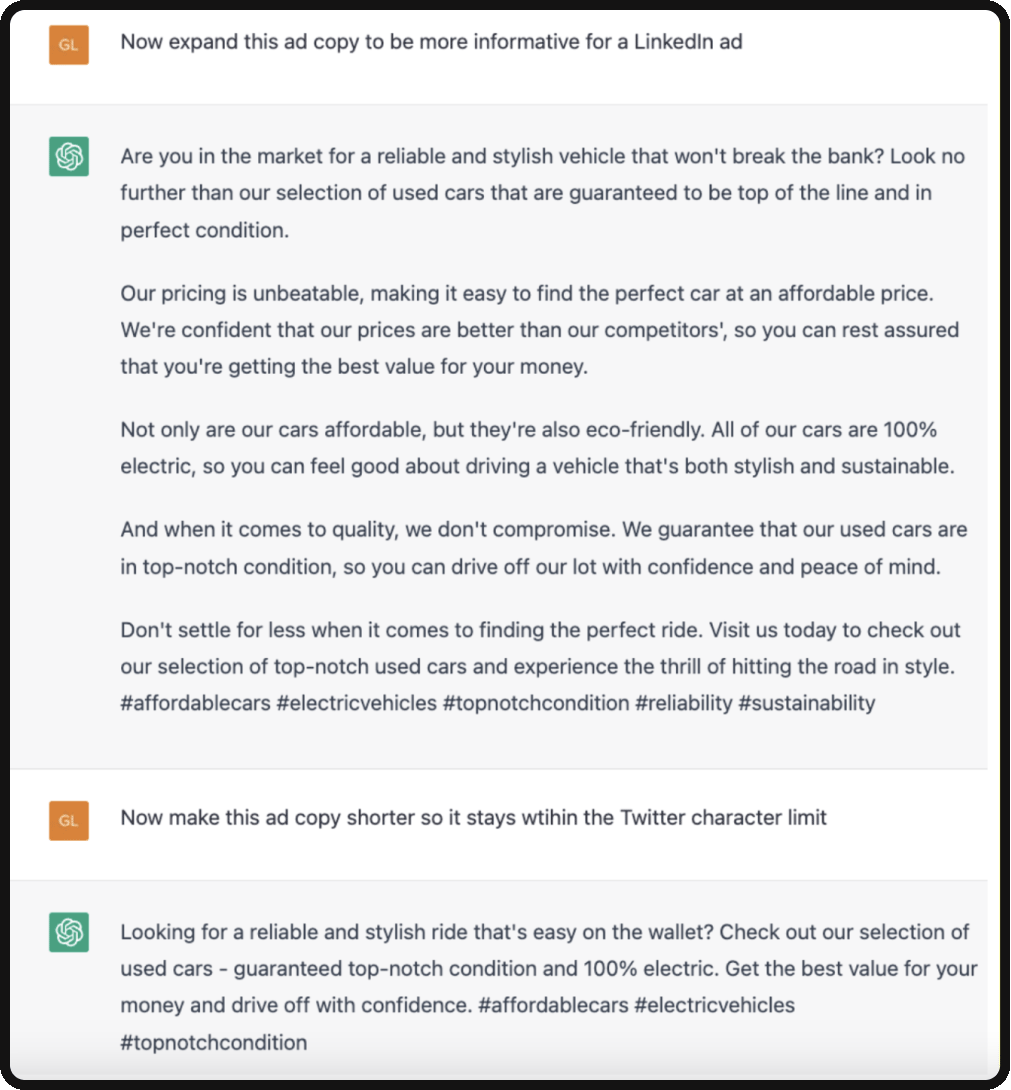
What other levers can AI inform?
Generative AI can analyze large amounts of data to identify patterns and trends, providing insights for optimization and improvement where measurement and feedback loops are needed.
It’s even possible to integrate ChatGPT through Google Sheets and API Key for analysis, projections, and analytical reporting efforts. Below, the formula =gpt () is pulling prompts and data directly from google sheets. With tools like the API Key and this Google Sheets extension, it’s possible to incorporate ChatGPT in your own customizable way to fill your exact needs.

Generative AI can also help segment audiences for targeting efforts using historical campaign data to identify the most relevant and profitable audiences.

The list is truly endless as long as you can organize a prompt with the proper data inputs, Generative AI can assist with many other levers such as CRO methods like A/B testing and optimization of ad creatives and landing pages, strategic deployment by analyzing market trends and identifying opportunities for growth, as well as giving recommendations for budget allocation and other campaign optimization strategies.
A prompt for this could be, “Analyze this dataset to provide recommendations on which ad creatives to turn off and which ad creatives to leave running based on historical CTR, total spend, CAC, and CVR.”
Things to Be Cautious Of with Generative AI
Generative AI can be a powerful tool in performance marketing, but as with most great tools available to us, there are inherent risks and some potential pitfalls to be aware of when using it. One of the main risks is that the generated content may not be aligned with the brand’s values or messaging, potentially damaging the brand’s reputation. This is why it’s important for the end-user to have checks and balances when working with generative AI tools like ChatGPT, Dall-E 2, Writer, Jasper.AI and more. It is even possible to train these machines to learn what was incorrect or undesirable in the outputs to avoid those types of off-brand outputs in the future.
Some of these undesirable outputs can come in the form of odd-looking images when using image-generating AI tools like Dall-E 2. Always make sure to carefully review the output of generative AI tools. This includes checking for any distorted or unappealing images that could negatively impact the performance of your ads. When in doubt, always go back and revisit your original prompt. The more precisely you engineer your prompts, the more accurate output the AI tool will provide.
It is also recommended to understand the limitations and capabilities of the specific AI tool you’re using to generate images, as some tools may be better suited for certain types of images than others.
Another potentially risky area is that the generated content might not always be legally compliant. It’s completely up to the end-user to review and adjust outputs as necessary because ChatGPT cannot be sued or penalized (yet) for incorrect or illegal claims. It’s always important to ensure that your work that uses any generated content is compliant with legal and ethical standards.
Lastly, it is important to be aware that generative AI is still an infantile technology, and there may be bugs or errors in the system that result in unexpected or inappropriate output. Overall, it is always essential to give that last human run-through to validate any generative AI output before using it in live marketing efforts. It’s definitely something to approach with caution and to ensure that any output is aligned with the brand’s values, compliant with legal and ethical guidelines, and thoroughly tested before use.
Also be aware of potential copyright infringement, by ensuring that any text or images generated by AI tools are not in violation of any copyright laws. If you stick to reputable AI tools that are well-known for using legal practices, you are less likely to run into any copyright infringement issues.
If you leave with some important takeaways for best practices when using generative AI, here they are:
- Set clear parameters and goals when working with AI tools to ensure that the generated content aligns with your brand and messaging.
- Regularly analyze and review performance for any campaigns ad sets or ads that utilize outputs generated by AI to ensure that they are meeting your performance goals.
- Continue to follow the proper marketing strategies and techniques like A/B testing and other experimentation methods to test different variations of ad creative generated by AI.
- Never stop refining your AI strategy and educating yourself on new breakthroughs in machine learning technology, and always keep up to date on industry trends.
- Implementing generative AI into your performance marketing efforts can be a powerful time-saving tool for creating high-performing ad content, but it’s important to approach it with caution and best practices in mind.
Conclusion
The marketer’s toolbox is rapidly expanding as more and more applications for generative AI are introduced every day. These tools will only improve over time and it is essential to continue to iterate and stay open-minded to this new technology.
Marketers who leverage generative AI can gain a competitive advantage by creating more effective and targeted campaigns. If used properly, these tools have the power to improve the quality of work and reduce the man-hours required for executing certain tasks.
I encourage you to continue to experiment with generative AI tools and challenge yourself to improve your prompt engineering skills with Natural Process Language (NPL) tools. You will thank yourself later!




